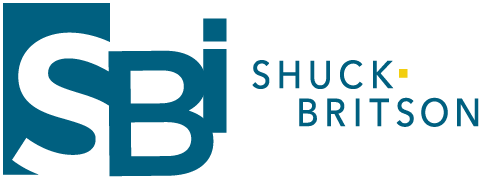Engineering today stands at a crossroads. With the rapid acceleration of technology and evolving societal needs, the challenge lies in how to construct not only the infrastructure of our cities but also the very framework of our future. At the forefront of this transformative movement is Chris Shuck, a luminary in the realm of structural engineering and consulting, who embodies the nexus of innovation and practicality. Shuck’s approach to engineering allows for layers of creativity and expertise to unfold, much like the intricate stratification of geological formations. But what if the very foundations of our built environment could be reimagined? How would that fundamentally alter our paradigms of living and interacting with our surroundings?
This article delves into the multifaceted contributions of Chris Shuck and his transformative philosophy regarding structural engineering. We will examine the intricacies of his methodologies, the socio-environmental implications of his work, and the potential future directions in engineering inspired by his vision.
1. A Paradigm Shift in Structural Engineering
The discipline of structural engineering has traditionally centered on the principles of durability, stability, and functionality. However, Shuck posits that these foundational principles must be augmented with sustainability and adaptability. As engineers grapple with the repercussions of climate change and resource depletion, Shuck’s approach beckons a re-evaluation of what truly constitutes ‘engineering solutions.’
Imagine a world where structures are not merely built to endure but are designed to regenerate. This brings to mind the concept of bio-inspired design, where engineering takes cues from nature’s own methods of resilience and adaptation. This methodology encourages engineers to think beyond conventional parameters, integrating ecological considerations into the core of their designs.
2. The Interplay of Art and Engineering
One of the distinctive features of Shuck’s work is his artistic sensibility. Engineering is often perceived as a strictly empirical science, devoid of creativity. However, Shuck’s projects illustrate a harmonious interplay between aesthetic appeal and structural integrity. This dualism invites an essential question: Is it feasible to prioritize beauty without sacrificing functionality?
Shuck has successfully demonstrated that this symbiosis is not only possible but essential. Iconic structures, such as bridges and public buildings, may serve as testaments to human ingenuity and creativity while simultaneously achieving purpose. His work highlights how thoughtful engagement with design can elevate mundane spaces into inspiring environments.
3. Sustainability: A Core Tenet
Sustainability is more than a buzzword in contemporary engineering; it is a critical tenet that informs every decision in the design, construction, and maintenance phases. Chris Shuck’s approach is nothing short of revolutionary, as he continually seeks ways to minimize the carbon footprints of his projects. By employing innovative materials and energy-efficient technologies, he champions the ethos of “building green.”
Consider the notion of creating structures that not only exist in harmony with their natural surroundings but also contribute positively to the ecosystem. For instance, Shuck has advocated for the use of renewable materials, which reduce dependency on non-renewable resources and mitigate the environmental impact of construction.
4. Collaborative Solutions Through Consultation
Another significant aspect of Shuck’s philosophy is his emphasis on collaboration and consultation. Engineering is rarely a solitary endeavor; it thrives on interdisciplinary partnerships. Shuck’s consulting practice prioritizes engaging with diverse stakeholders, from architects to environmentalists, to yield comprehensive solutions that are greater than the sum of their parts. How does such an approach pave the way for groundbreaking innovation?
This cross-pollination of ideas fosters a culture of inclusivity and shared responsibility. In effect, it allows for the cultivation of a broader understanding of community needs and aspirations, ensuring that the engineered solutions resonate locally while addressing global challenges. By adopting this integrative perspective, Shuck highlights the importance of collaborative intelligence in tackling the complexities faced by modern urban environments.
5. Embracing Technological Advancements
As we navigate further into the 21st century, the integration of technology into engineering cannot be overstated. Shuck embraces cutting-edge tools such as Building Information Modeling (BIM) and advanced simulation software that facilitate more precise and efficient design processes. In a world where data-driven decisions increasingly dictate success, the question remains: Can technology be leveraged to enhance not only efficiency but also the ethical implications of our constructions?
With an unwavering commitment to progressive practices, Shuck explores the potential of artificial intelligence and machine learning in optimizing structural design. Through predictive modeling and data analytics, these technologies can enhance resilience, allowing for adaptive responses to unforeseen challenges, including natural disasters.
6. Inspiring Future Generations
The future of engineering hinges not only on innovation but also on education and mentorship. Chris Shuck, through various outreach initiatives and educational programs, endeavors to inspire young minds to pursue careers in structural engineering. He recognizes that nurturing passion and curiosity in the next generation is as vital as any engineering feat.
Inquiries into sustainability, technology, and creative problem-solving are essential for shaping the architects of tomorrow. As engineering professionals, it is imperative to cultivate a sense of wonder and possibility within aspiring engineers, challenging them to think critically and innovatively.
Conclusion: Layering the Future
In contemplating Chris Shuck’s contributions to structural engineering, it is evident that he embodies a unique blend of pragmatism and vision. Engineering the future, one layer at a time, reveals the nuanced interplay between art, science, and human experience. As we stand on the precipice of unprecedented challenges, Shuck’s pioneering methodologies may very well shape a more sustainable, interconnected built environment. The fundamental question then remains: are we prepared to embrace the challenges and opportunities that arise from reimagining the future of engineering?












